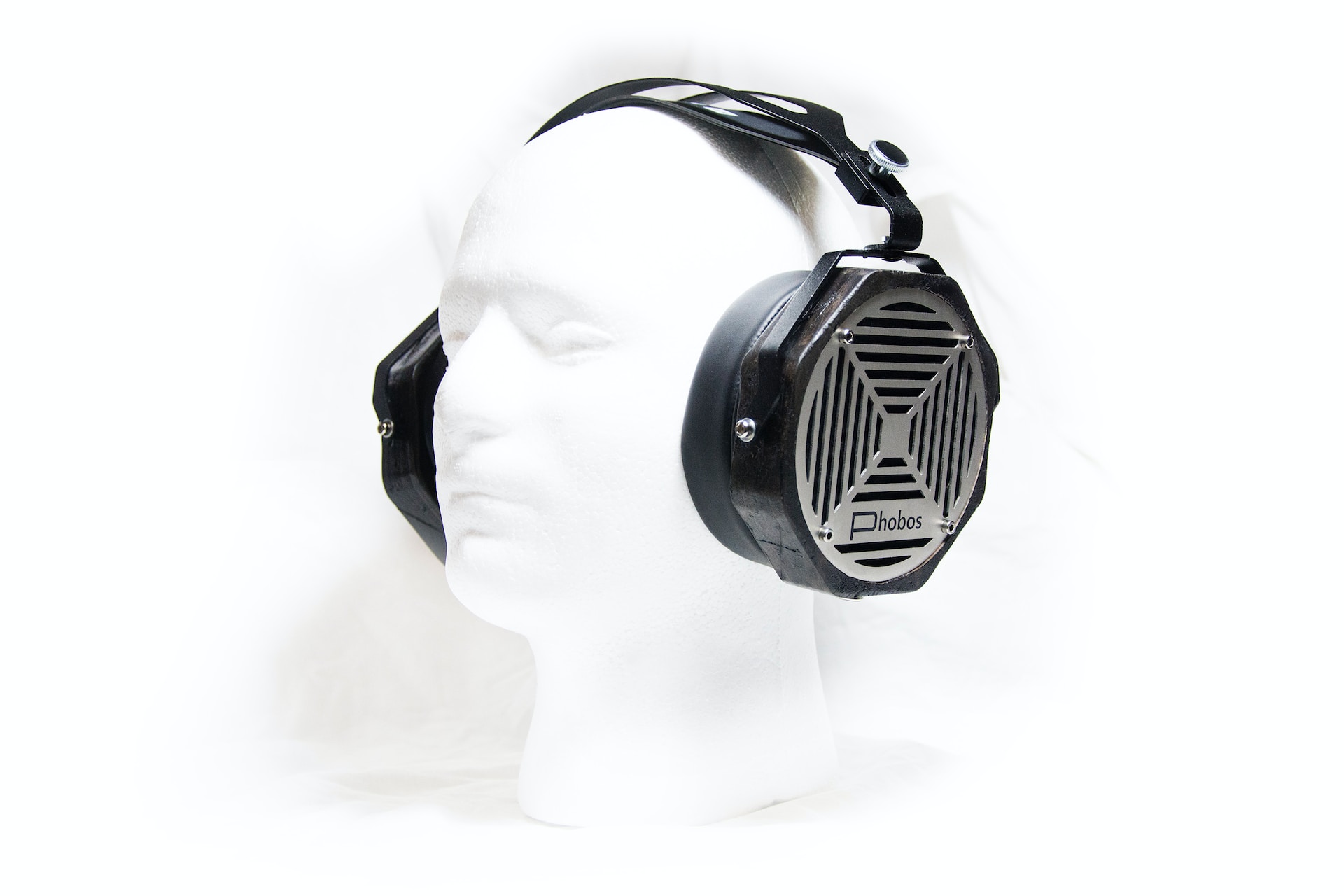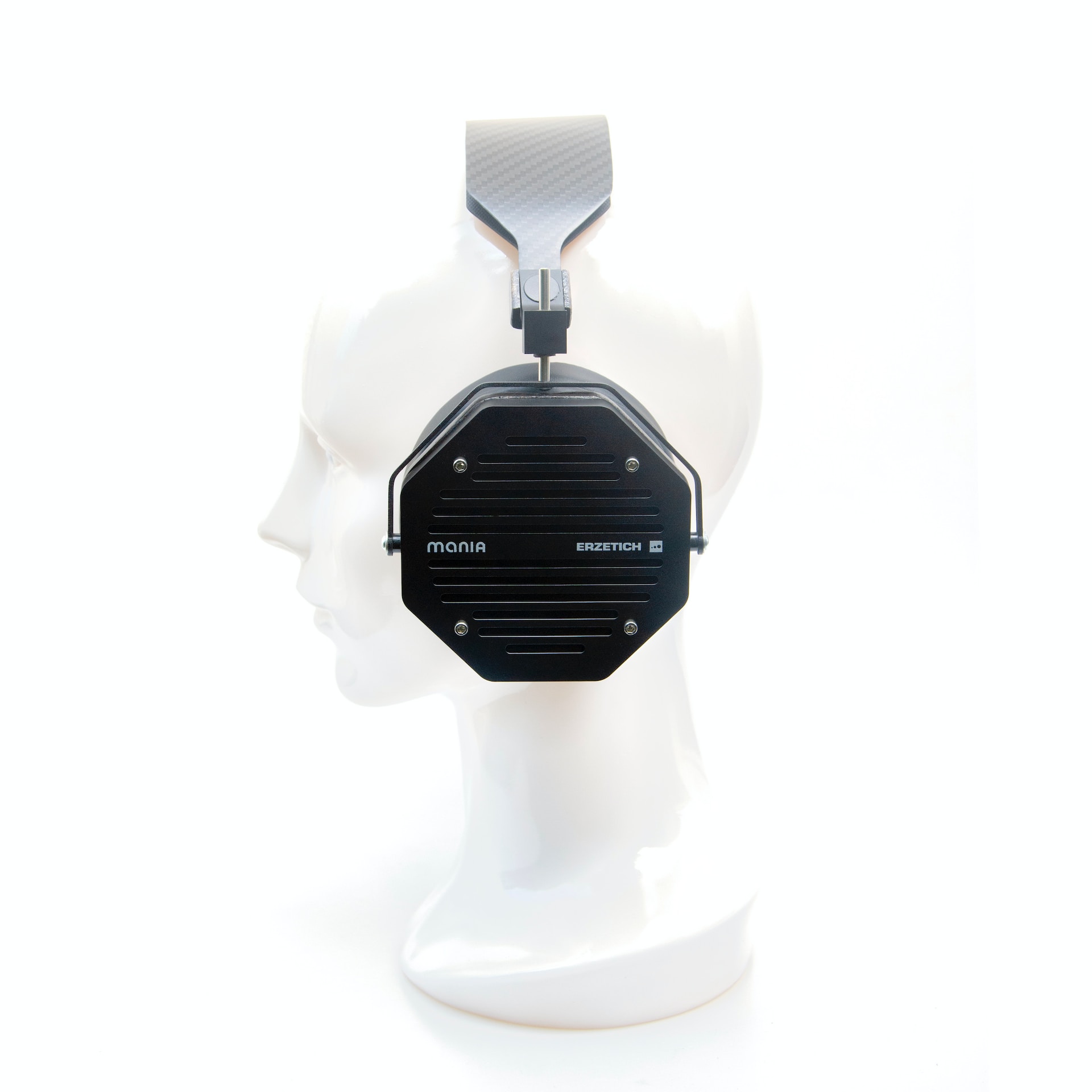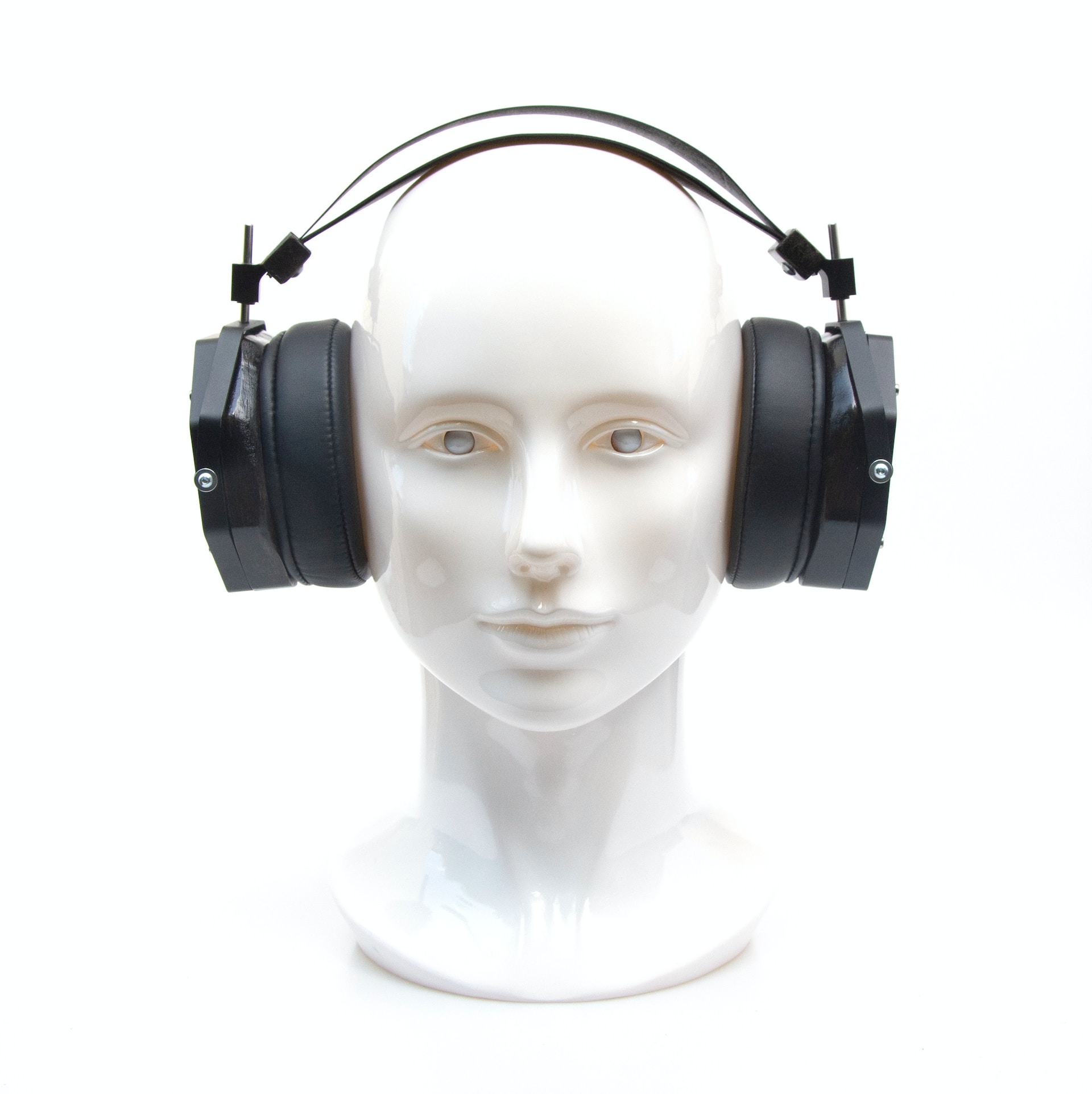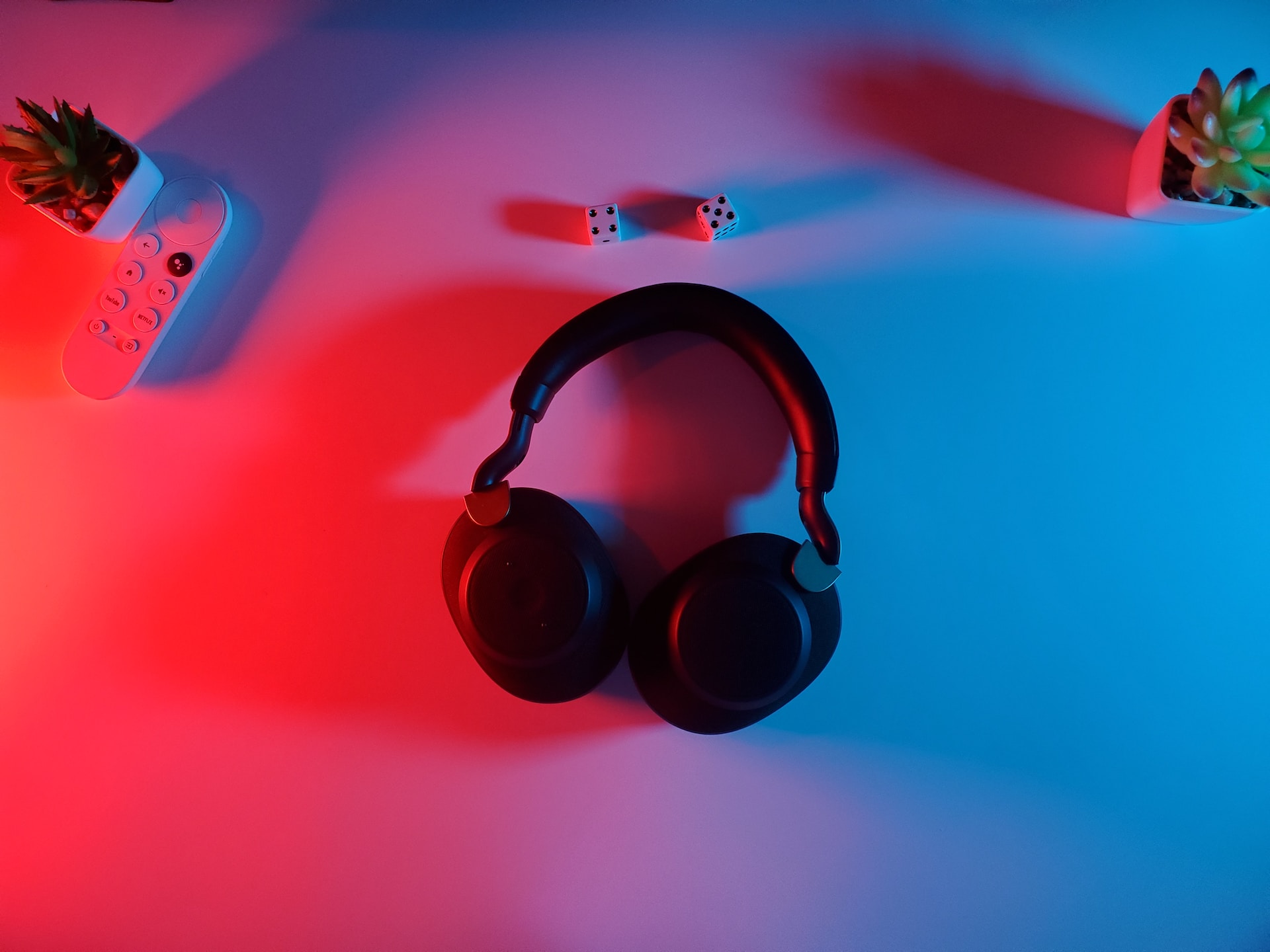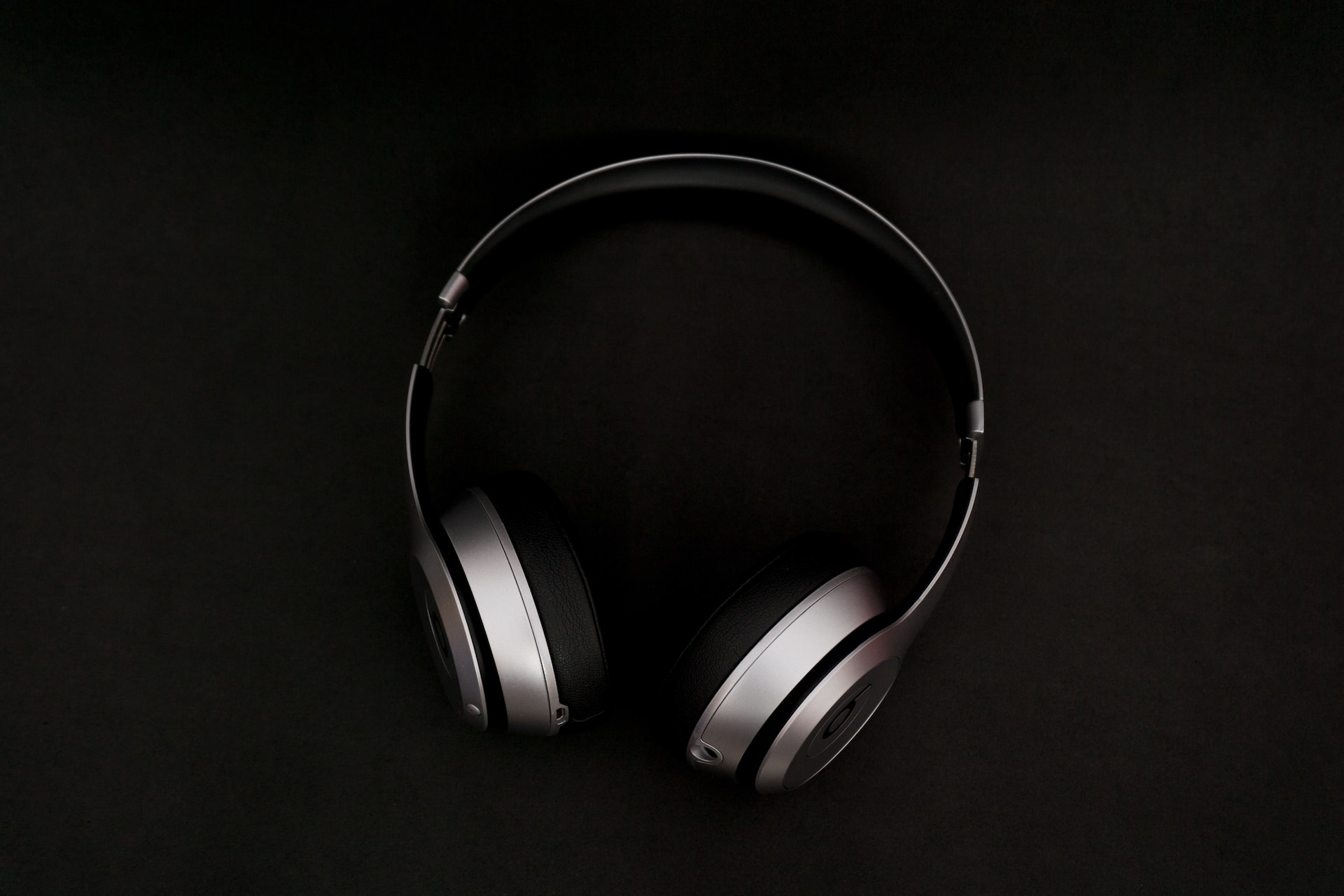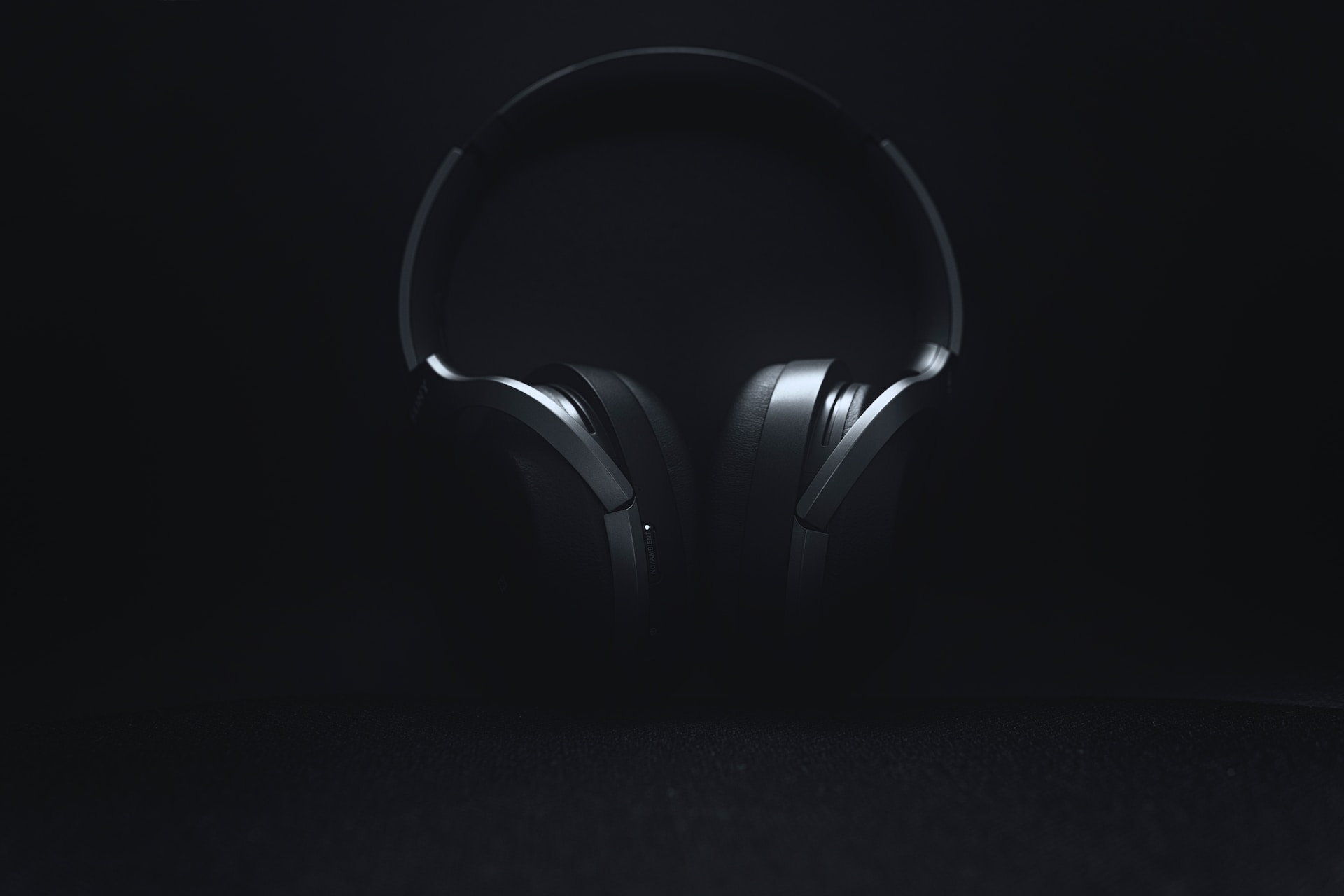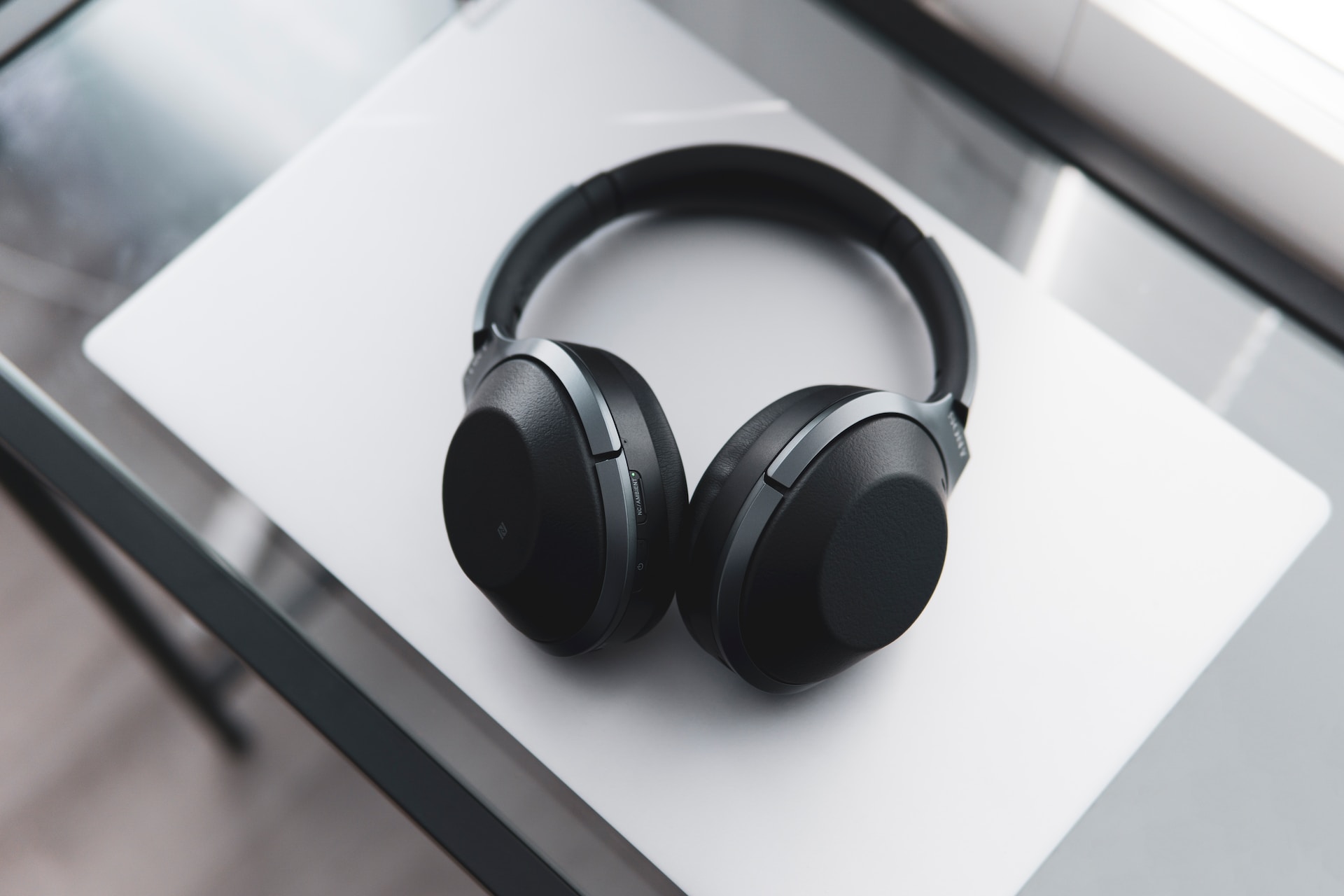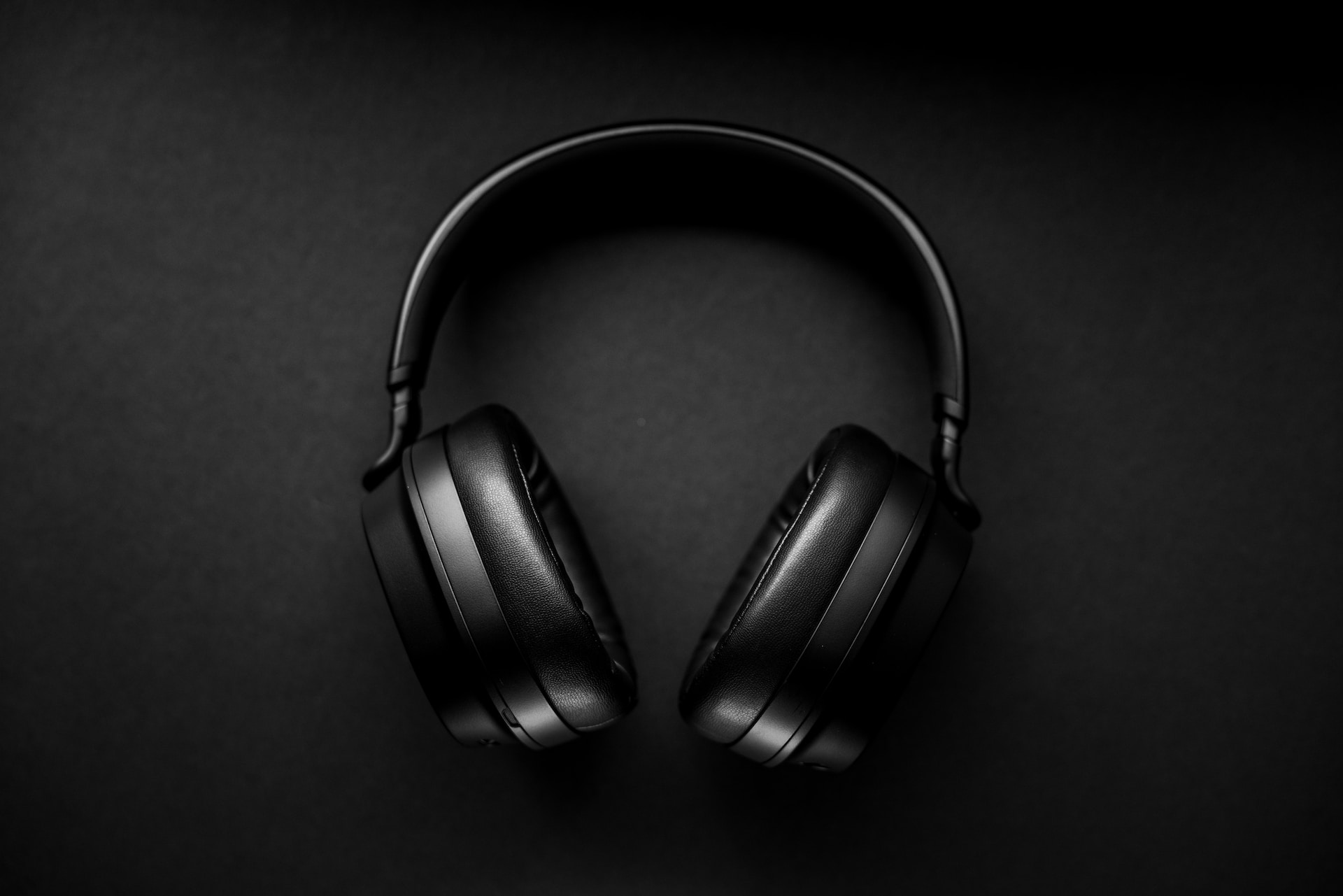If you love listening to music with deep and powerful bass, you might be wondering how to choose a pair of headphones that can deliver that satisfying thump and rumble. One of the factors that affect how well headphones reproduce bass is their frequency response accuracy. In this article, we will explain what bass frequency response accuracy is, why it matters, and how we score and test it for different headphones.
What is Bass Frequency Response Accuracy?
Frequency response is a measure of how headphones reproduce sound across different frequencies, from low to high. It shows how loud or quiet each frequency is relative to a reference level. Bass frequency response accuracy describes how closely headphones match a target curve in the low-frequency region of the audible spectrum, which ranges from 20Hz to 250Hz. This region represents the deep and heavy tones in your music, such as low rumbles, kick drums, and bass instruments.
Bass frequency response accuracy is important for sound quality because it affects how balanced and natural your music sounds. If headphones have too much or too little bass compared to the target curve, they may sound boomy, muddy, or thin. If headphones have uneven or inconsistent bass across different frequencies, they may sound distorted or lacking in detail.
Why Does Bass Frequency Response Accuracy Matter?
Bass frequency response accuracy matters for different reasons depending on your listening preferences and activities. Some music genres, such as EDM, hip-hop, rock, or dubstep, are arranged to be bass-heavy and rely on a strong and punchy bass to create an immersive and energetic sound. If you listen to these genres often, you may want headphones that can accurately reproduce bass without overpowering or masking other frequencies.
On the other hand, some music genres, such as classical, jazz, or acoustic, are more focused on mid-range and treble frequencies and require a more neutral and balanced bass to preserve the clarity and detail of instruments and vocals. If you listen to these genres more frequently, you may prefer headphones that have less or more subtle bass compared to the target curve.
Bass frequency response accuracy also depends on your listening activity. For example, if you watch movies or play games with headphones, you may want more bass than usual to enhance the impact and realism of sound effects and explosions. If you listen to podcasts or audiobooks with headphones, you may want less bass than usual to avoid distracting or interfering with the speech and narration.
Finally, bass frequency response accuracy is also a matter of personal taste. Some people enjoy a more pronounced and exaggerated bass, while others prefer a more subtle and refined bass. Some people are more sensitive or tolerant to variations in bass performance, while others are more indifferent or oblivious. There is no right or wrong answer when it comes to bass preference, as long as you are happy and comfortable with your listening experience.
How Do We Measure Bass Frequency Response Accuracy?
To measure bass frequency response accuracy, we use a series of tests and metrics that evaluate different aspects of how headphones reproduce bass. We use a calibrated dummy head with microphones in its ears to record the sound produced by the headphones. We then compare the recorded sound to a target curve that represents our ideal frequency response for headphones. The target curve is based on research and data from various sources, such as the Harman International curve, the diffuse field curve, and the free field curve. The target curve is not meant to be a universal standard, but rather a reference point that reflects our preferences and expectations for headphones.
We use five main metrics to measure bass frequency response accuracy: low-frequency extension, bass value, standard error, weighted harmonic distortion, and frequency response consistency. Each metric has a different weight and impact on our overall score for bass frequency response accuracy. Here is a brief explanation of each metric and how we calculate it:
Low-Frequency Extension
Low-frequency extension (LFE) is the lowest frequency at which the headphones can reproduce bass without losing volume. It indicates how deep and extended the bass can go before it becomes inaudible or too quiet. A lower LFE means that the headphones can produce more sub-bass frequencies, which are below 60Hz, and create a sense of rumble and power. A higher LFE means that the headphones have less sub-bass frequencies, which may make them sound thin or weak.
To measure LFE, we find the frequency at which the headphones’ frequency response drops by 3dB from their average level in the 20Hz-250Hz range. We then compare this frequency to our target LFE of 10Hz, which is the lowest audible frequency for humans. The closer the headphones’ LFE is to our target LFE, the higher their score for this metric.
Bass Value
Bass value (BV) is the average amplitude of the bass region relative to our target curve. It indicates how loud or quiet the bass is compared to our ideal level. A higher BV means that the headphones have more bass than our target curve, which may make them sound boomy or muddy. A lower BV means that the headphones have less bass than our target curve, which may make them sound thin or weak.
To measure BV, we calculate the average difference between the headphones’ frequency response and our target curve in the 20Hz-250Hz range. We then compare this difference to our target BV of 0dB, which means that the headphones match our target curve exactly. The closer the headphones’ BV is to our target BV, the higher their score for this metric.
Standard Error
Standard error (SE) is the deviation of the bass region from our target curve. It indicates how smooth or uneven the bass is across different frequencies. A lower SE means that the headphones have a more consistent and balanced bass that follows our target curve closely. A higher SE means that the headphones have a more variable and uneven bass that deviates from our target curve significantly.
To measure SE, we calculate the root mean square error (RMSE) between the headphones’ frequency response and our target curve in the 20Hz-250Hz range. RMSE is a statistical measure of how much error there is between two sets of data. We then compare this error to our target SE of 0dB, which means that there is no error between the headphones and our target curve. The closer the headphones’ SE is to our target SE, the higher their score for this metric.
Weighted Harmonic Distortion
Weighted harmonic distortion (WHD) is the amount of distortion in the bass region caused by non-linearities in the headphones. It indicates how clean or distorted
the bass sounds. A lower WHD means that the headphones have a more pure and more accurate bass that preserves the original sound. A higher WHD means that the headphones have a more distorted and inaccurate bass that adds unwanted noise and artifacts.
To measure WHD, we calculate the total harmonic distortion (THD) of the headphones in the 20Hz-250Hz range. THD is a measure of how much the headphones alter the original signal by adding harmonics or multiples of the original frequency. We then apply a weighting function to the THD values to give more importance to lower frequencies, where distortion is more audible and annoying. We then compare the weighted THD values to our target WHD of 0%, which means that there is no distortion in the headphones. The closer the headphones’ WHD is to our target WHD, the higher their score for this metric.
Frequency Response Consistency
Frequency response consistency (FRC) is the variations in bass performance due to different fits and positions of the headphones. It indicates how stable or reliable the bass is across different users and situations. A higher FRC means that the headphones have a more consistent and dependable bass that does not change much with different ear shapes, sizes, or placements. A lower FRC means that the headphones have a more inconsistent and unpredictable bass that varies a lot with different ear shapes, sizes, or placements.
To measure FRC, we test the headphones with five different dummy heads that have different ear shapes and sizes. We then calculate the standard deviation of the headphones’ frequency response in the 20Hz-250Hz range across the five dummy heads. Standard deviation is a measure of how much variation there is in a set of data.
We then compare this variation to our target FRC of 0dB, which means that there is no variation in the headphones’ frequency response across different dummy heads. The closer the headphones’ FRC is to our target FRC, the higher their score for this metric.
What are the Best Headphones for Bass Frequency Response Accuracy?
Based on our tests and ratings, here are some of the best headphones for bass frequency response accuracy that you can buy right now:
- Sony WH-1000XM4: These wireless over-ear headphones have an excellent bass frequency response accuracy score of 9.1 out of 10. They have a low LFE of 10Hz, a close BV of -0.1dB, a low SE of 0.7dB, a low WHD of 0.2%, and a high FRC of 9.8 dB. They also have an adjustable bass level via their companion app, so you can fine-tune their sound to your liking. They have a comfortable and premium design, a long battery life, and an outstanding noise cancellation feature that blocks out ambient noise.
- Bose QuietComfort Earbuds: These wireless in-ear headphones have an excellent bass frequency response accuracy score of 8.9 out of 10. They have a low LFE of 10Hz, a close BV of -0.2dB, a low SE of 1dB, a low WHD of 0.3%, and a high FRC of 8 dB. They also have an adjustable bass level via their companion app, so you can customize their sound to your preference. They have a comfortable and stable fit, a decent battery life, and an impressive noise cancellation feature that isolates you from external sounds.
- Sennheiser HD 800 S: These wired over-ear headphones have an excellent bass frequency response accuracy score of 8.8 out of 10. They have a low LFE of 10Hz, a close BV of -0.3dB, a low SE of 1dB, a low WHD of 0.4%, and a high FRC of 7dB. They have a neutral and balanced sound profile that delivers accurate and detailed bass without overpowering or masking other frequencies. They have a luxurious and comfortable design, a detachable cable, and an open-back design that creates a spacious and natural soundstage.
Benefits and drawbacks
The benefits and drawbacks of different headphones based on their bass frequency response accuracy depend on various factors, such as the headphones’ design, features, sound profile, and price.
Here are some examples of how different headphones compare and contrast in terms of their bass frequency response accuracy and how they have evolved from previous models or releases to provide improvements, address issues, or otherwise help users in making a purchase decision:
-
Sony WH-1000XM4 vs Sony WH-1000XM3:
These wireless over-ear headphones have similar bass frequency response accuracy scores of 9.1 and 9.0 out of 10, respectively. They both have a low LFE of 10Hz, a close BV of -0.1dB and -0.2dB, respectively, a low SE of 0.7dB and 0.8dB, respectively, a low WHD of 0.2% and 0.3%, respectively, and a high FRC of 9.8dB and 9.7dB, respectively. They also both have an adjustable bass level via their companion app, so users can fine-tune their sound to their liking.
The main benefit of these headphones is that they deliver deep and powerful bass without compromising sound quality. The main drawback of these headphones is that they are expensive and may not suit users who prefer a more neutral or balanced sound profile. The Sony WH-1000XM4 has evolved from the Sony WH-1000XM3 to provide some improvements, such as a better microphone quality, a longer battery life, a more comfortable fit, and a multi-device pairing feature. They also address some issues, such as the lack of a mute button, the touch-sensitive controls being too sensitive, and the noise cancellation being too aggressive.
-
Bose QuietComfort Earbuds vs Bose QuietComfort 35 II:
These wireless in-ear headphones have similar bass frequency response accuracy scores of 8.9 and 8.8 out of 10, respectively. They both have a low LFE of 10Hz, a close BV of -0.2dB and -0.3dB, respectively, a low SE of 1dB and 1.1dB, respectively, a low WHD of 0.3% and 0.4%, respectively, and a high FRC of 8dB and 7.9dB, respectively. They also both have an adjustable bass level via their companion app, so users can customize their sound to their preferences.
The main benefit of these headphones is that they have a comfortable and stable fit that isolates users from external sounds. The main drawback of these headphones is that they have a short battery life and may not suit users who prefer a more open and spacious soundstage.
The Bose QuietComfort Earbuds have evolved from the Bose QuietComfort 35 II to provide some improvements, such as a better noise cancellation feature, a more compact and sleek design, an IPX4 rating for water resistance, and a wireless charging case. They also address some issues, such as the lack of an equalizer in the app, the lack of volume controls on the earbuds, and the lack of support for aptX or LDAC codecs.
-
Sennheiser HD 800 S vs Sennheiser HD 800:
These wired over-ear headphones have similar bass frequency response accuracy scores of 8.8 and 8.7 out of 10, respectively. They both have a low LFE of 10Hz, a close BV of -0.3dB and -0.4dB, respectively, a low SE of 1dB and 1.1dB, respectively, a low WHD of 0.4% and 0.5%, respectively, and a high FRC of 7dB and 6.9dB, respectively.
They have a neutral and balanced sound profile that delivers accurate and detailed bass without overpowering or masking other frequencies. The main benefit of these headphones is that they have a luxurious and comfortable design that creates a spacious and natural soundstage. The main drawback of these headphones is that they are very expensive and may not suit users who prefer a more closed and isolated sound.
The Sennheiser HD 800 S has evolved from the Sennheiser HD 800 to provide some improvements, such as a lower treble peak, a higher bass extension, a detachable cable with a balanced XLR-4 connector, and an improved damping factor. They also address some issues, such as the lack of a microphone, the lack of remote control, and the lack of wireless connectivity.
Alternatives to our score and test for bass frequency response accuracy on headphones
To compare and contrast our score and test for bass frequency response accuracy on headphones with similar alternatives. Here are some of the main similarities and differences between our method and other methods:
Similarities:
-
- We and other sources, use a calibrated dummy head with microphones in its ears to record the sound produced by the headphones. This simulates how humans hear sound and captures the effects of the headphones’ design, fit, and seal on the frequency response.
- We and other sources, use a target curve that represents our ideal frequency response for headphones. The target curve is based on research and data from various sources, such as the Harman International curve, the diffuse field curve, and the free field curve. The target curve is not meant to be a universal standard, but rather a reference point that reflects our preferences and expectations for headphones.
- We and other sources, use metrics such as low-frequency extension, bass value, standard error, weighted harmonic distortion, and frequency response consistency to measure different aspects of how headphones reproduce bass. These metrics evaluate how deep, loud, smooth, clean, and stable the bass is across different frequencies.
Differences:
-
- We use a different target curve than other sources. Our target curve is more neutral and balanced across the bass, mid, and treble ranges, while their target curve is more bass-heavy and treble-heavy. This means that we prefer a more natural and accurate sound profile, while they prefer a more pronounced and exaggerated sound profile.
- We use different weights and thresholds for our metrics than other sources. Our weights and thresholds are based on our own analysis and testing of different headphones and how they affect our perception of sound quality. This means that we may give more or less importance to certain metrics or factors than they do.
- We test the headphones with five different dummy heads that have different ear shapes and sizes, while other sources use only one dummy head. This means that we account for more variations in bass performance due to different fits and positions of the headphones, while they assume a more consistent fit and position.
Our Score and Test Evolution.
Our score and test for bass frequency response accuracy on headphones have evolved from previous models or releases to provide improvements, address issues, or otherwise help users in making a purchase decision. Here are some of the main changes and updates that we have made to our method over time:
-
We have updated our target curve to reflect the latest research and data from various sources, such as the Harman International curve, the diffuse field curve, and the free field curve.
Our new target curve is more neutral and balanced across the bass, mid, and treble ranges, while our old target curve was more bass-heavy and treble-heavy. This means that our new target curve represents a more natural and accurate sound profile that suits a wider range of genres and preferences.
-
We have added new metrics to measure different aspects of how headphones reproduce bass, such as weighted harmonic distortion and frequency response consistency.
These metrics help us evaluate how clean and stable the bass is across different frequencies. Our old metrics only measured how deep, loud, and smooth the bass was. This means that our new metrics provide a more comprehensive and detailed assessment of bass performance that captures more nuances and variations.
-
We have increased the number of dummy heads that we use to test the headphones from one to five.
These dummy heads have different ear shapes and sizes that simulate how humans hear sound. This helps us account for more variations in bass performance due to different fits and positions of the headphones. Our old method only used one dummy head that assumed a consistent fit and position. This means that our new method provides a more realistic and reliable evaluation of bass performance that reflects how different users may experience it.
-
We have improved our ratings and reviews for different headphones based on our tests and ratings.
We have added more information and explanation to our ratings and reviews, such as visuals, audio, features, design, pros, cons, and comparisons. We have also made our ratings and reviews more user-friendly and accessible, such as using bullet points, lists, tables, charts, graphs, and links. Our old ratings and reviews were less informative and comprehensive, such as using only text, numbers, and stars. This means that our new ratings and reviews provide more value and guidance to users who are looking for the best headphones for bass frequency response accuracy.
Conclusion
Bass frequency response accuracy is one of the factors that affect how well headphones reproduce bass. It describes how closely headphones match a target curve in the low-frequency region of the audible spectrum, which ranges from 20Hz to 250Hz. Bass frequency response accuracy is important for sound quality because it affects how balanced and natural your music sounds.
To measure bass frequency response accuracy, we use five main metrics: low-frequency extension, bass value, standard error, weighted harmonic distortion, and frequency response consistency. Each metric evaluates a different aspect of how headphones reproduce bass.
To record the sound made by the headphones, we employ a calibrated dummy head with ears fitted with microphones. Then, using a target curve that simulates the ideal frequency response for headphones, we contrast the recorded sound with the target curve.
Based on our testing and evaluations, we have also selected and reviewed some of the top headphones for bass frequency response accuracy. These headphones have excellent scores for bass frequency response accuracy and deliver deep and powerful bass without compromising sound quality. They also have other features that make them comfortable, durable, and versatile.
We hope you found this article helpful and informative. If you have any questions or feedback, please feel free to leave a comment below. We would love to hear from you and learn from your experience. Thank you for reading and happy listening!
Frequently Asked Questions
Here are some of the most common questions that people ask about bass frequency response accuracy and headphones:
How can I improve the bass performance of my headphones?
There are several ways to improve the bass performance of your headphones, such as adjusting the fit and position of the headphones, using an equalizer or a bass booster app, changing the ear tips or pads, or using a headphone amplifier.
What are some of the benefits and drawbacks of having more or less bass in headphones?
More bass in headphones can boost the impact and excitement of music, movies, and games, provide a more immersive and realistic soundstage, and work well with certain bass-heavy genres and activities. The disadvantages of having greater bass in headphones include the potential for it to obscure or overpower other frequencies, diminish the clarity and detail of sound, and result in ear strain or hearing loss.
Less bass can improve clarity and detail, preserve balance and naturalness of sound, and suit specific genres and activities that place a greater emphasis on mid-range and treble frequencies. These are just a few advantages of having less bass in headphones. Less bass can make sounds thin or weak, lack punch and realism, and be inappropriate for some bass-heavy genres and activities, among other downsides.
What are some of the factors that affect how I perceive bass in headphones?
Some of the factors that affect how you perceive bass in headphones are your ear shape and size, your hearing sensitivity and preference, your listening volume and environment, your music source and quality, and your mood and expectation.
How can I test the bass frequency response accuracy of my headphones?
One way to test the bass frequency response accuracy of your headphones is to use a frequency sweep test. This is a sound file that plays a tone that gradually changes from low to high frequencies. You can listen to this file with your headphones and pay attention to how loud or quiet each frequency is relative to the other. You can also compare the sound to a reference level or a target curve to see how accurate your headphones are.
Another way to test the bass frequency response accuracy of your headphones is to use a frequency response graph. This is a visual representation of how headphones reproduce sound across different frequencies. You can find frequency response graphs for different headphones on our website or other online sources. You can look at these graphs and see how closely they match our target curve or your ideal curve.
What are some of the best music genres for testing bass frequency response accuracy?
Some of the best music genres for testing bass frequency response accuracy are those that have a lot of low-frequency content or variation, such as EDM, hip-hop, rock, dubstep, reggae, or metal. These genres can help you evaluate how well your headphones reproduce deep and powerful bass without losing volume or quality.
What are some of the best songs for testing bass frequency response accuracy?
Some of the best songs for testing bass frequency response accuracy are those that have a clear and prominent bass line or beat, such as Billie Eilish’s Bad Guy, Kendrick Lamar’s HUMBLE. The Weeknd’s Blinding Lights or Queen’s Another One Bites The Dust. These songs can help you assess how well your headphones reproduce accurate and detailed bass without overpowering or masking other frequencies.
What are some of the best movies or games for testing bass frequency response accuracy?
Some of the best movies or games for testing bass frequency response accuracy are those that have a lot of sound effects or explosions that create a sense of impact and realism, such as Avengers: Endgame, Inception, Star Wars: The Force Awakens, Call of Duty: Modern Warfare, Doom Eternal, or Grand Theft Auto V. These movies or games can help you evaluate how well your headphones reproduce deep and powerful bass without losing volume or quality.
How do I know if my headphones have too much or too little bass?
One way to know if your headphones have too much or too little bass is to compare them to a reference pair of headphones that you know have a good and accurate bass performance. You can also use an equalizer or a bass booster app to adjust the bass level of your headphones and see if you prefer more or less bass.
Another way to know if your headphones have too much or too little bass is to listen to different types of music or audio content and see how they sound. If your headphones have too much bass, you may notice that some sounds are muffled, distorted, or drowned out by the bass. If your headphones have too little bass, you may notice that some sounds are thin, weak, or lacking in impact.
How do I choose the best headphones for bass frequency response accuracy?
There are several factors to consider when choosing the best headphones for bass frequency response accuracy, such as your budget, your style, your comfort, your features, and your compatibility. You should also look at our ratings and reviews for different headphones and compare their scores and performance for bass frequency response accuracy. You can also check out our recommendations and rankings for the best headphones for bass frequency response accuracy.
How can I learn more about bass frequency response accuracy and headphones?
If you want to learn more about bass frequency response accuracy and headphones, you can visit our website and read our articles, guides, and FAQs on this topic. You can also watch our videos and podcasts where we explain and demonstrate how we score and test for bass frequency response accuracy. You can also join our community and forum where you can ask questions, share opinions, and get advice from other headphone enthusiasts.


